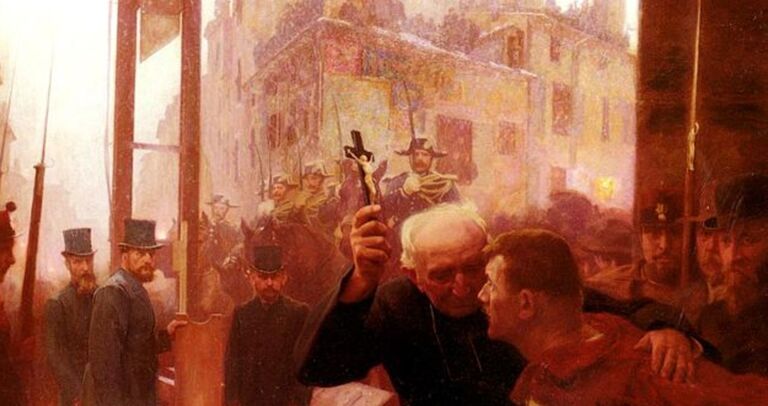Eyewitness Accounts Expose What Execution By Guillotine Was Actually Like
Off with their heads! We remember the guillotine as one of the grisliest instruments in world history, as it transformed the noble ideals of the French Revolution into an absolute bloodbath during the late 1700s. However, few know about the device's curious origins, as well as its unexpected usage in the more modern age. Taking "cancel culture" to a truly dark level, the guillotine was a terrifying sight for all — especially those who knelt underneath its blade.
Scary Stuff
Public executions were highly-anticipated spectacles for centuries. Crowds would gather before a beheading, eagerly anticipating the death of the unfortunate political rival or prisoner. The guillotine brought that frenzy to a new high. It may have offered a fast death, but the machine itself was terrifying to onlookers.
20 Pounds of Metal
Colonel Francis Maceroni was shocked by the machine’s appearance when he witnessed an execution in 1813. He took special note of the guillotines enormous, sharp blade, which he described as "about a foot square, and the upper side or back is loaded with some 20 pounds of metal."
Confining the Delinquent
Francis stared in horror as the executioner fitted the condemned’s head into the machine. “The patient's head is not placed upon that block, but fixed just above it, between two pieces of wood, which embrace the neck, exactly as the two parts of the common village "stocks" confine the feet of the petty delinquent,” he wrote. That sounds horrifying, and yet the guillotine was originally considered to be quite humane.
Joseph-Ignace Guillotin
Celebrated physician Joseph-Ignace Guillotin didn't invent the machine, but he did suggest that France adopt it as a means of capital punishment. Curiously, Guillotin was actually against the death penalty, but he believed that mechanical beheading would be faster, less painful and reduce the number of executions over time. The doctor would live to regret this theory.

